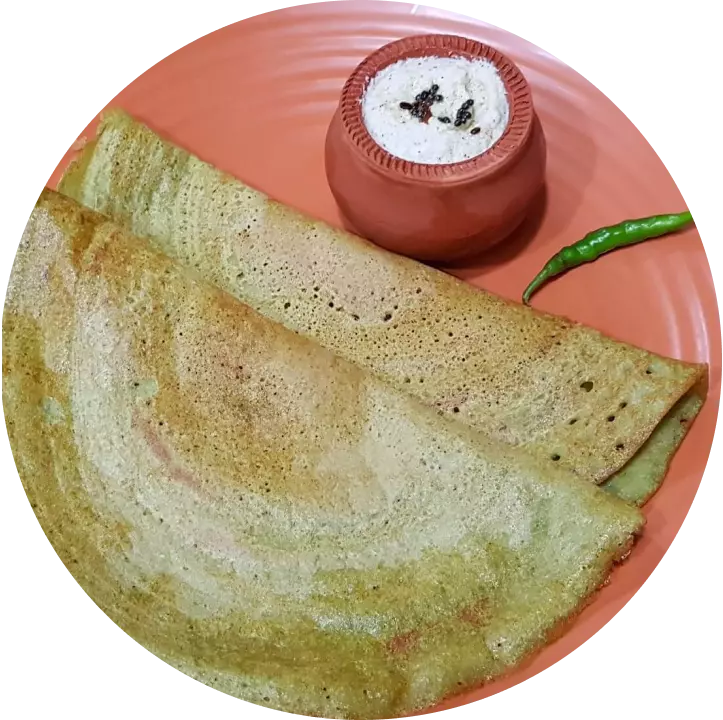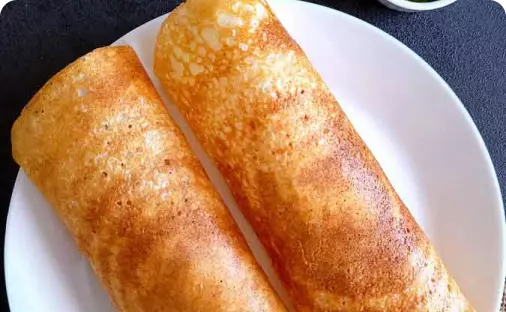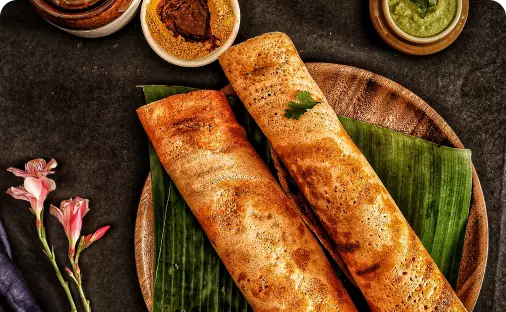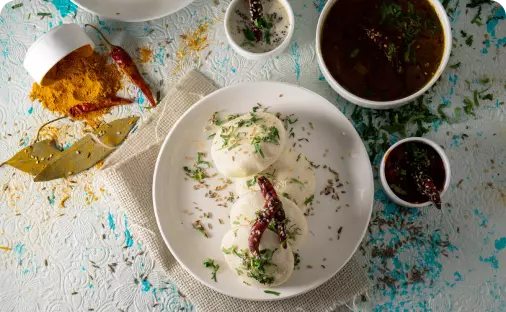Pesarattu
- Course: Breakfast
- Country of Origin: India
- Place or Region: Andhra Pradesh
- Main Ingredients: Green Gram

Feeling like munching on a snack but don’t want to eat the same old unhealthy food? Pesarattu will come to your rescue to quench your hunger while also feeding nutrition to your gut. Originating in Andhra Pradesh, India, Pesarattu, Pesara Attu, or Pesara Dosa (moong dal dosa) is a crepe like bread similar to dosa and is enjoyed in breakfast or as a snack accompanied with aalampachadi (ginger chutney), coconut chutney. Unlike regular dosa, Pesarattu does not involve using urad dal or requires any fermentation but instead, uses green gram (Pesalu in Telugu) or (moong dal in Hindi) which is as delicious as it is healthy. Pesalu or Pesara translates to green gram in Telugu and Attu means dosa or crepe which makes the word Pesarattu.
There is another variation of Pesarattu served in the coastal region of Andhra Pradesh which is known as Pesarattupma. Upma when served with Pesarattu is called as Pesarattupma and is particularly popular in West Godavari district, East Godavari district, Krishna district, Guntur district, and Visakhapatnam district. Similar kind of variations can be found in North Indian cuisine as well, such as Moong dal cheela or besancheela in Rajasthan, commonly known as Cheeldo. One of the healthiest yet delicious dishes to gorge down, Pesarattu is a wholesome recipe you won’t feel guilty even after wolfing down a bit more than your tummy could handle.


Making of Pesarattu
Pesarattu is not a difficult food item to prepare but needs perfection to achieve the desired taste and texture. To make Pesarattu, Pesalu or green gram is soaked in water for 5-7 hours and then grinded to smooth paste with a couple of green chilies, ginger, cumin seeds, black pepper and some salt. Add water to the batter as per requirement to make the mixture flowy but not too runny while you grind the paste and allow the mixture to rest for a while to make sure the interiors of the grains are fully hydrated.
The batter is then poured over a heated pan or skillet after sprinkling some oil and spread it in a circular motion. After a few minutes, the Pesarattu will slowly start to get crispy over the edges and small air pockets will form on the surface. Flip the Pesarattu and cook completely from the other side as well before serving hot along with tamarind chutney or any chutney of your choice. To make it even more delicious, chopped onions and chillies can also be added over the poured batter before flipping the Pesarattu.


Nutritional Content
One Pesarattu provides 145 calories, out of which carbohydrates comprises 82 calories, protein account for 30 calories, and the remaining 32 calories come from fat. One Pesarattu provides about 7 percent of the total daily caloric requirement of a standard adult diet of 2000 calories. It is a rich source or vitamins as well and is low in fat and cholesterol making it a good replacement for people with diabetes, high blood pressure, and those who want to lose some pounds.
Video
Pesarattu
A lentil known for its high nutritious properties, begin your day with the healthy and flavorful Pesarattu prepared and fragranced with a brew of moong dal and spices and devoured with a tinkle of ginger or tamarind chutney.
Related Food Items

Dosa
Known with several names such as Dosha in Malayalam and Telugu, Dosai in Tamil, and Dose in Kannada, Dosa is undoubtedly one of the yummiest and healthiest food... READ MORE


